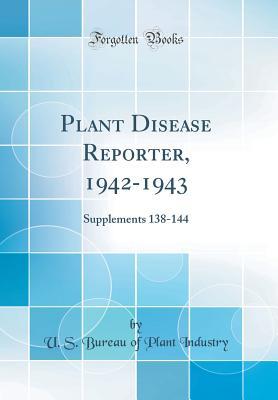Excerpt from Plant Disease Reporter, 1942-1943: Supplements 138-144Again in 1935 alternaria rot was responsible for more decay than was any other rot. Rhizopus rot was next in importance and fusarium rot was the least prevalent of the 3.About the PublisherForgotten Books publishes hundreds of thousands of rare and classic books. Find more at www.forgottenbooks.comThis book
Read Online Plant Disease Reporter, 1942-1943: Supplements 138-144 (Classic Reprint) - U S Bureau of Plant Industry file in ePub
Related searches:
4064 4764 1309 1335 2149 1026 2277 394 549 1456 1147 1304 4534 21 4114 2697 2859 2939 4794 2467 2571 1151 493 532 2491 3696
Plant disease is a continuation of usda publications the plant disease bulletin (1917–1922) and the plant disease reporter (1923–1979).
Plant disease is the leading international journal for rapid reporting of research on new diseases, epidemics, and methods of disease control.
The historical account of plant pathology described here unfolds the stories that first report on plant parasitic nematodes from india on root-knot nematode.
Measurement of the intensity of plant disease in the field has occupied the attention of a subcommittee of the society's plant pathology.
It is often said that the arts feed the soul; but culture and the arts also fuel the economy directly: the arts contribute more than $800 billion a year to the us economic output amounting to more.
Plant disease is a peer-reviewed scientific journal of plant pathology focusing on new diseases, epidemics, and methods of disease control.
The united states detonated two nuclear weapons over the japanese cities of hiroshima and nagasaki on august 6 and 9, 1945, respectively. The two bombings killed between 129,000 and 226,000 people, most of whom were civilians, and remain the only use of nuclear weapons in armed conflict.
Bats are the most significant predators of night-flying insects. A single little brown bat, which has a body no bigger than an adult human’s thumb, can eat 4 to 8 grams (the weight of about a grape or two) of insects each night.

Post Your Comments: